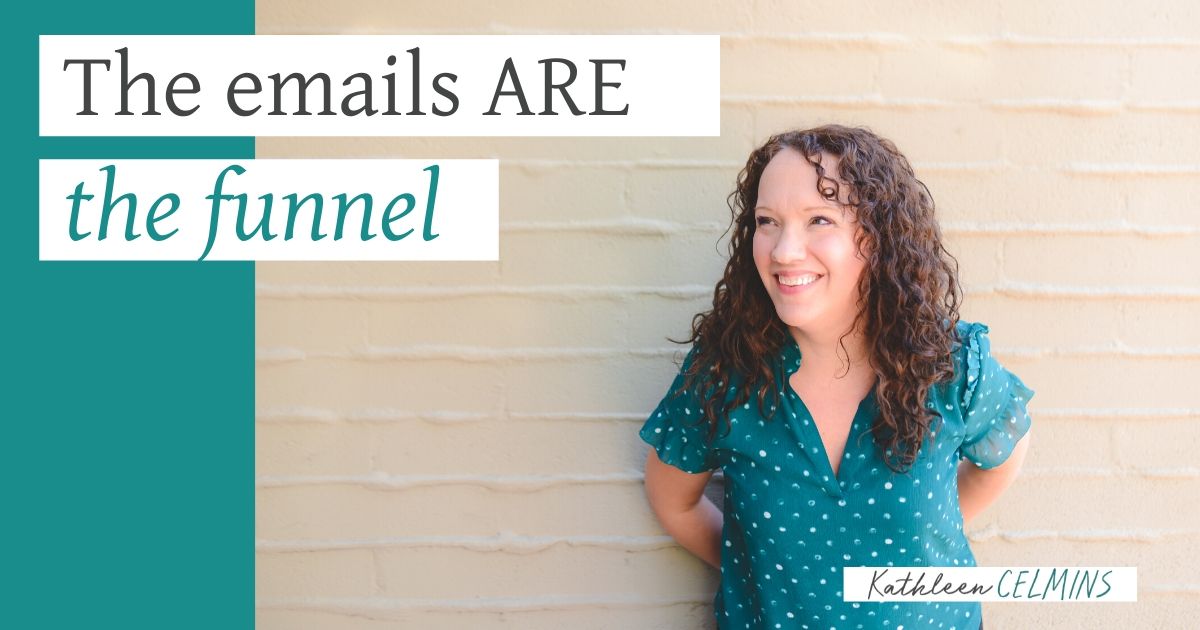Over the weekend I was talking to a friend who was complaining about the cost of their e-mail subscriber list. Whatever her email provider charges for 20,000 subscribers, was too much.
Now, I didn’t spout off to this person because that’s not cool. I don’t get invited out very often as it is and if I just start spouting off to somebody while I am out it’s not going to serve me very well.
But this person also mentioned the phrase “sales funnels” and asked if that’s something I put together, and I said yes because it’s hard to say no to something like that. If somebody speaks the lingo I will absolutely tell you that I work with sales funnels. Because sales funnels are basically just an e-mail opt-in page that is supposed to grab your attention and make you share your email address, which then converts into an offer.
See, the e-mails are the funnel.
No matter what opt-in you use whether a webinar, a quiz, a checklist, a spreadsheet or whatever you create beside “hey sign up for our emails,” even if it’s really, really good it will only convert a small percentage of people.
You craft that ofter to be either a slice of your paid offer or introduction to what your paid offer is and then you nurture those people through email. And so your emails should be converting people.
So the person who has 20,000 subscribers and a zero percent conversion rate shouldn’t jump to, “Maybe I should find a cheaper email provider!” Instead, they need to work on their copy.
You get people to give you their email address so they can get access to whatever your opt-in is and then they get on your email list to learn more about your offer. Then some of them buy your offer and then those people who have success with your offer they tell other people.
The best email follow-up sequences feel like a gentle magnet. The reader is compelled to know the next step and they don’t feel pushed into anything.
Just like you wouldn’t propose on the first date, right?
It’s an analogy that is tired, but actually makes a lot of sense. You’re not asking for a lifetime commitment from your email list like you are when you propose but it is similar to courting. You don’t go from “hey, can I buy you a drink?” to “hey, do you want to move in together?” Not without some serious lead nurturing along the way!
So don’t go set your email list on fire and say ”Forget it. I’m going to switch to a different email provider that I don’t even know.”
First of all, switching e-mail providers is complicated on purpose. The e-mail providers don’t want to make it easy for you to leave. So then you’re committing all of this brain space to something that will have a very marginal difference.
If you go from something like MailChimp to something like Active Campaign or ConvertKit, you might see a small improvement. Because MailChimp charges you for people who are on multiple lists even if it’s the same e-mail address, and then the other ones are subscriber-based so maybe it’ll drop you down a tier…maybe.
Look at your e-mail follow-up sequence.
What happens after they’ve watched your webinar, or they’ve downloaded your opt-in? What kinds of e-mails are you sending? Are you sending, “thank you for coming, here’s a recap.” or are you sending one e-mail for each of the six mistakes people make as taught in your webinar?
You should be sending an e-mail that says Mistake One: X. Mistake two: X. Because remember, as much as you rehearsed, edited, and refined your presentation these people are seeing it for the first time. And we humans need repetition in order to learn better.
Do you have a frequently asked questions e-mail? Even if they’re not frequently asked questions they are the objections that people might have to purchasing. “This might not work for me, this might not work at all, I don’t know if I can trust you.” All of those kinds of questions should be answered in the FAQ e-mail. If you come up with 20 questions you need to split that up into three or four e-mails.
Then a few emails with testimonials and screenshots of results like, “This eye cream made me look 20 years younger!” You can use the nice comments on your Facebook page or emails from customers. If you do all those pretty quickly, you’ll see that you’ll put together a really solid follow-up sequence.

Beware of marketing jargon
Since I’m on my soapbox anyway, let me just address the people that like to throw jargon around to make all of this seem complicated. I just laid out a very comprehensive e-mail strategy. So when somebody says strategy or systems that make it sound like some big complicated technique, remember, an email strategy is just a way to talk to a person that you want to build a relationship with.
An organization system is just something that helps you get your work done. So be wary of people who offer systems and solutions. You just have to get better at talking to your person.
If you have a bunch of people on your e-mail list and you are not converting, ask them what they want to read about and then do that. It’s really not that complicated. Remember that your people opted in you’re not bothering them. They have opted in because of something compelling that made them want to give you their email address.
You got this. All you need to do is talk to them. Ask them questions. Write to them. Remember that they are people and not just numbers on the subscriber list. And if people are not engaging with your stuff clean them out.

